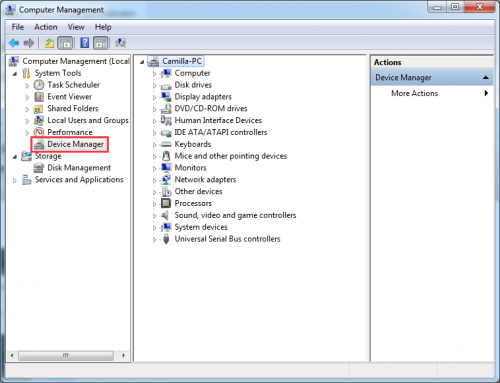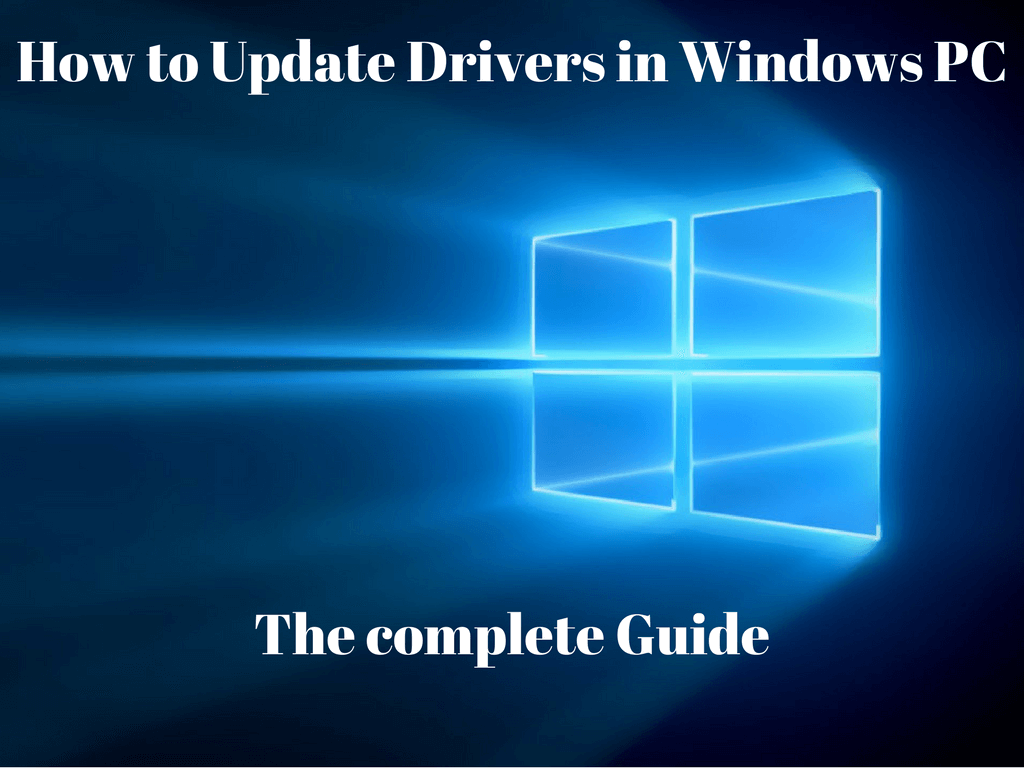A driver is a collection of files that activate one or more hardware devices and enables them to connect with the computer’s operating system. But Updating Drivers in Your Windows PC is always a tedious task.
Without drivers, the computer is unable to send or receive data in a correct manner to different devices attached to the computer.
Also, if the right kind of driver is not installed then the device will not work properly. In Microsoft windows, drive error can be sorted by device manager.
It is a small part of software that sends information to the operating system to connect with hardware.
How to Update Drivers in Your Windows PC
You might need to update drivers in Windows when a new part of hardware you’ve installed doesn’t work itself or maybe after updating to a new version of Windows.
Updating drivers is also a troubleshooting step when the device faces some type of problem or is generates an error, like a Device Manager error code.
Optional Walkthrough: If you’d like to follow the process given below, but with more information and screenshots for each step, use my Step by Step Guide to Updating Drivers in Windows instead.
1.Find, download, and extract the latest drivers for the hardware. You should always check with the hardware manufacturer first when searching for an updated driver. When downloaded from the hardware maker, you’ll find the driver is both valid and the most recent for the hardware.
2.Open Device Manager. There are many ways to get to Device Manager in Windows but doing so from the Control Panel (the method outlined in the link) is pretty simple.

3. With Device Manager open, click or touch the > or [+] icon (depending on your version of Windows) to open the category that you think contains the device you want to update the drivers for.

4. Once you’ve found the device you’re updating drivers for, the next step depends on your version of Windows:
How to Update Drivers in Your PC having Windows 10 & 8:
Right click or press and hold on the hardware’s name or icon and choose Update Driver Software…
Update Drivers in Your PC Having Windows 7 & Vista:
Right click on the hardware’s name or icon, choose Properties, then the Driver tab, followed by the Update Drive… button.
The Update Driver Software wizard will start, which we’ll completely step through to finish the driver update for this piece of hardware.

Update Drivers in PC having Windows XP:
Right click on the hardware item, choose Properties, the Driver tab, and then the Update Drive… button. From the Hardware Update Wizard, choose No, not this time to the Windows Update question, followed by Next >.
From the search and installation options screen, choose Don’t search I will choose the driver to install option, again followed by Next >.
Skip to Step 7 below.
1. To the How do you want to search for driver software? question, click or touch Browse my computer for driver software.
2. Next, on the Browse for driver software on your computer window, click or touch Let me pick from a list of device drivers on my computer, located near the bottom of the window.
3. Touch or click on the Have Disk… button, located on the bottom-right, under the text box.
4. On the Install from Disk window that appears, click or touch the Browse…button on the bottom-right corner of the window.
5. On the Locate File window you see now, work your way to the folder that you created as part of the driver download and extraction in Step 1.
There may be several nested folders within the folder you extracted. Ideally, there will be one labeled with your version of Windows (like Windows 10, or Windows 7, etc.) but if not, try to make an educated guess, based on what you’re updating the drivers for, as to which folder might contain the driver files.
If you find several INF files in one folder then Update Driver Software wizard loads information from all the INF files in the folder you’re in automatically, so it doesn’t matter which one you choose.
If you find many folders with INF files then Try an INF file from each folder until you find the correct one. If you didn’t find an INF file in the folder you chose then look through other folders, if there are any, until you find one with an INF file.
If you didn’t find any INF files or if you haven’t found an INF file in any folder included in the extracted driver download, it’s possible that the download was corrupted. Try downloading and extracting the driver package again.
- Touch or click OK back on the Install From Disk window.
- Choose the newly added hardware in the text box and then click or touch Next.
Note: If you get a warning after pressing Next, see Step 13 below. If you don’t see an error or another message, move on to Step 14.
6. There are a number of common warnings and other messages that you might get at this point in the driver update process, several of which I’ve paraphrased and listed here along with advice on what to do.
Windows cannot verify that the driver is compatible: If you’re sure this driver is the right one, touch or click Yes to continue installing it.
Select No if you think you might have the driver for the wrong model or something like that, in which case you should look for other INF files or maybe an entirely different driver download.
Windows can’t verify the publisher of this driver software: Choose Yes to continue installing this driver only if you received it directly from the manufacturer or from their installation disc.
Choose No if you downloaded the driver elsewhere and didn’t exhaust your search for a manufacturer-provided one.
Similarly to the publisher verification problem above, choose Yes only when you’re confident about the driver’s source.
Windows requires a digitally signed driver: In 64-bit versions of Windows, you won’t even see the above two messages because Windows won’t let you install a driver that has a digital signature issue.
If you see this message, end the driver update process and locate the correct driver from the hardware maker’s website.
7.While on the Installing driver software… screen, which should only last a few to several seconds, Windows will use the instructions included in the INF file from Step 10 to install the updated drivers for your hardware.
Depending on the drivers you happen to be installing, you may be required to enter additional information or make certain choices during this process, but this isn’t very common.
8.Once the driver update process is complete, you should see a Windows has successfully updated your driver software window. Touch or click on the Close button. You can also now close Device Manager.
9.Restart your computer, even if you’re not prompted to do so.
Windows don’t always force you to restart after updating a driver but I think it’s a good idea after updating your Drivers.
Driver updates involve changes to the Windows Registry and other important parts of Windows so restarting is a good way to make sure that this update hasn’t negatively impacted some other part of Windows.
If you do find that the driver update caused some kind of problem, just roll back the driver to the previous version and then try updating it again.
Also Read:

